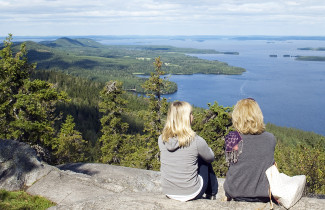The University of Eastern Finland participated in a study that assessed the prospects of the ‘Nature Restoration Law’. The article has been published in the Science Magazine in December 2023.
Scientists leading large European projects on nature restoration and biodiversity provide a positive outlook for the new nature restoration regulation. They however point out that ambitious national implementation and cooperation with economic sectors, such as agriculture, will eventually determine the success of nature restoration in Europe.
The new restoration regulation pursues significant impact
The ‘Nature Restoration Law’ (NRL) requires member states of the EU to implement restoration measures on at least 20 per cent of land and marine areas by 2030, and in all ecosystems in need of restoration by 2050. This includes specific targets to rewet peatlands, restore forests and to increase pollinator populations.
The NRL is part of the Green Deal and aims to contribute significantly to the attainment of both the EUs climate targets and the international biodiversity agreement of Kunming-Montreal. This global accord stipulates the restoration of a minimum of 30 percent of degraded ecosystems. Given that over 80 percent of habitats in the EU are currently in a state of degradation, the NRL represents a crucial leap forward in addressing this environmental challenge.
European policy analysis provided insight
NRL represents a globally unique but hotly debated regulation that aims to halt and reverse biodiversity loss in Europe. The NRL has already overcome various hurdles: most recently, it was approved by the EU Parliament’s Environment Committee, after delegations of the Parliament and the Council of Europe negotiated the final text. Early 2024, the European Parliament will take a final vote on NRL.
But it remains hitherto uncertain whether the regulation will really achieve its aims, considering a multitude of changes included in the negotiation process. A recent Science Magazine article presents an analysis of experiences with other European environmental directives and policies and evaluates the prospects of the NRL to be successful.
UEF contributed greatly trough giving the their inputs in the study, coming from the forestry perspective in two projects funded by H2020 EU funding, namely SUPERB and WaterLANDS.
Article:
Daniel Hering et al. (2023) Securing success for the Nature Restoration Laws. Science 382, 1248–1250. https://doi.org/10.1126/science.adk1658
Further information:
UEF co-author: Nataša Lovrić, School of Forest Sciences, University of Eastern Finland. Tel: +358505279156. Email: natasa.lovric@uef.fi
Main author of the study: Daniel Hering, Department of Aquatic Ecology, University of Duisburg-Essen. Phone: +49 201 1833084, daniel.hering@uni-due.de




